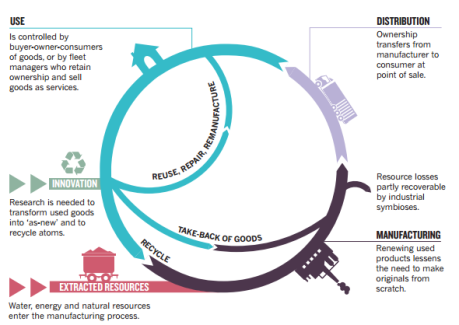Start-ups hold a concentration of ideas and ambitions, frustration and wanting to get somewhere fast. An analogy would be the sprout; a plant in its initial phase of growth. At this point the young organism contains a high concentration of enzymes and nutrients. It is the cultivating of this stage and the stages that follow which determine the successful development and yield of the vegetation.
Yield determination
The ecophysiological basis of yield determination in grain, for instance, could be applied to a start-up in its first 3 years of growth. Whereas a decided number of major sets of processes are determined and intimately linked to effective yield, it is often not clearly defined in a start-up environment.
The creation of a robust technology platform from the get-go is a propelling opportunity for any small company. It provides a small enterprise with the opportunity to organize their operations, build in a digital marketing strategy if required, collect big data along the journey and create differentiated IP for the organisation.
A technology platform with streamlined operations allows a start-up to remain lean for as long as possible, and to take advantage of a network approach, greater agility and in turn avoiding the strain often seen in a more traditional silo’ed structure.
Growth strategy, scalability and building capabilities
A growth strategy for any size organisation will include targets. Targets of value creation may take the form of revenues, cost savings, in addition to a multitude of performance metrics across the breadth of functions across the business. Planning for this value creation is vital. Future targets need to be understood and considered and taken into account the platform can prepare for the proposed scale.
The exciting part about digital, is that performance metrics are easily captured, with most applications within the platform generating data analytics. This data could be seen as the chrophyll, glucose or sap running through the veins of a plant. A finger on this pulse and quick interpretation of the key metrics will also help with rapid progress.
Scalability and the ambition of founding individuals is often the drive for digital innovation in the first place. It has become another buzz word for all entrepreneurs. If it hasn’t already been considered from the outset, companies may reach the 3 year milestone with revenues of X, and want to successfully double that, then create the hocky-stick momentum of growth. The building of a platform is a chance for a company to look to the future to understand where it wants to be, and re-organising itself, to ensure to will be able to get there more quickly.
Building capabilities to ensure the company grows sustainably is vital. It might be that the founding individuals who have grown the company to a particular level, and may have become for a better word, generalists as a result– need to quickly decide which area they need to specialize in. Gaps need to be accounted for and further individuals with expertise will need to be recruited to drive each embryonic business function, albeit with a network approach to doing so. Each individual will need to be able to think on their feet and be reactive with a finger on the daily pulse of every day activities.
Digitising the operating model
With start-ups there is an opportunity to build an organisational model of the future and from scratch, in doing so surpassing competitors too heavy to achieve the same results. The key aim being to generate impressive top-line revenue, from the customer, and quickly. Each touch point of the customer journey needs to be fully supported by the internal organisations with data collected where possible.
# The customer journey and front-end development
How do we get consumers to engage more, with the visuals, content and to take action on the site? The digital marketing strategy is key to ensure interest and traffic is generated, the journey then commences. Via which channel and why did they click through? How can the consumer best be steered towards the areas that will be of most relevance, how can the site best provide for them? Examples of customer journeys include a cable-TV subscriber signing up for a premium channel, or a shopper looking to buy a gift online.
Focusing on customer journies and the flow of data from the CMS frontline, can ensure the internal team react quickly, making any changes needed daily. An ecosystem requires companies to think holistically about how their operations and allows to greater cultivation of a distinctive customer experience.
# User journeys of the internal team to build the operating model
Change has to occur within the heart of any organisation with every individual taking full responsibility to be more instantaneous in their approach. A network effect of working between employees helps with the new height of transparency as a result of interconnected applications across disciplines. Understanding how each individual currently works, ‘their journey’, and ensuring onboarding to the new process will be a natural step. The community dashboard helps with the general navigation. Examples of an internal user journey would be the finance director, communicating only relevant parts of the PnL to specific members of the team. The feed of report would need to run from the connected accounting package, to the individual, in an automated manner and ideally not not via email.
Pricing structure and financial modelling
Strategically selecting the best combination of revenue streams for an organisation dictates the culture, brand presence and in turn the ecosystem. This can however change and evolve over time.
From a general product purchase, possibly subscription access to content, even pay per view, revenue via CPM, CPC advertising – the aim should be to build a culture online. Larger organisations with a strong brand presence, lifestyle culture have the advantage here. Revenue streams are simply extensions of that company. For a start-up, however they have to understand they are creating the culture of the company largely online and therefore the revenue model in turn shapes the company.
Considering price as a factor purchasing online, 20% of eCommerce website traffic originating from various price comparison websites. It can be used as a marketing tool, as on the high street, more importantly a conversion rate optimizer. With 12million eCommerce sites worldwide it is important to review the respective market.
Varying pricing strategies can be considered. Along with market-orientated pricing, dynamic pricing could also be considered with certain competitive pricing software available for the more established business. For a start-up however, understanding the consumer, their expectations and purchasing capacity, allows for a responsive pricing strategy. Financial modelling can help, from the moment the costs are realised, market prices known and consumer purchasing behaviour understood – scenario analysis’s can be run to understand the optimal pricing point. I am a large believer in value based pricing, with the aim of delivering a quality product, service start high, it is afterall better to bring the price down rather than increase it over time.
Potential barriers to growth
People
People and the behaviour of adoption can often be slow; in a start-up everyone has a voice! Is it possible to please everyone, yes, in time. Communication of how the re-organisation and aid in making their job easier will help with adoption. Improving the 360degree view of employees is crucial and encouraging them to think more of their feet and to remain as mobile as the company needs to be.
Information and data
Data creates value for a company, over the long term. It can also generate continual iterative improvements in the company. As long as the internal team are able to utilize the data and to respond positively, accelerated progress can be made. The shared dashboard and increased transparency between functions presents the opportunity for employees to learn across multiple functions, in turn, realizing hybrid and new opportunities for the business – without which the company will only evolve at the usual steady rate.
Shaping the future growth trajectory of the business
Digitisation should be an enabler for a company. The process of using tools and technology to automate a business, improving process, journeys not just for the customer but those supporting the organisation should accelerate progression.
A transition is often not smooth, however it should start to achieve simplification in the long run, yield optimal results and allow more instant and exciting innovation as the company evolves. The evolution of the company will depend on how holistically in tune individuals are with the busienss. It should be up to the individuals to have a hold on the enterprise and to shape and scale the company accordingly, in line with the ecosystem in which it has created or is part of. If you are a good parent, this should stand you in good stead.
In Summary
The confluence of new technologies, consumer expectations, the pressure on cost and performance could put off start-ups from originating in the first place. Reinventing a more established company from the core can cause disruption, dissuading it from which becoming a potential disruptor in the market.
However once a company has been re-organised from the inside out, and rebuilt with the platform at its base, the opportunities for scalability arise. The digital enterprise is a living and moving organism, employees need to be responsive to ensure optimal results. The goal of effective crop management is to optimise the physiological condition of the produce, often characterised by impressive yield, and when done effectively – makes it good enough to eat!
If at any point you feel the pressure, or feel dismayed, don’t be. Progress often results in taking a few steps back along the road, to move 100 steps forward. Relax, remember to balance the strategic thinking ahead with being in the moment and the here and now to create optimal fruition.


 Done correctly, digital transformation can make a large contribution in helping organizations, cities and nations better meet their sustainability goals — including those laid out by the Paris Agreement on climate change, which has recently gone into force. The agreement is “a global and legally binding agreement to reduce greenhouse gas emissions to limit global warming to well below 2°C.” It’s estimated that information and communications technology (ICT) devices, such as IT-enabled smart grids and buildings, have the potential to deliver a 20% reduction in global carbon emissions by 2030, and over $11 trillion in new economic benefits.
Done correctly, digital transformation can make a large contribution in helping organizations, cities and nations better meet their sustainability goals — including those laid out by the Paris Agreement on climate change, which has recently gone into force. The agreement is “a global and legally binding agreement to reduce greenhouse gas emissions to limit global warming to well below 2°C.” It’s estimated that information and communications technology (ICT) devices, such as IT-enabled smart grids and buildings, have the potential to deliver a 20% reduction in global carbon emissions by 2030, and over $11 trillion in new economic benefits.
